23
Oct
Parents Sue Manufacturer of Neurotoxic Insecticide Chlorpyrifos, Corteva (formerly Dow), for Causing Child’s Disabilities

(Beyond Pesticides, October 23, 2020) In central California, what promises to be a landmark series of lawsuits against Corteva (formerly DowAgroSciences), maker of the pesticide chlorpyrifos, is under way, spearheaded by the case Alba Luz Calderon de Cerda and Rafael Cerda Martinez v. Corteva Inc., et al. This first suit, brought by the parents of Rafael Cerda Calderon, Jr. on his behalf, charges that his lifelong disabilities were caused by chronic exposures to chlorpyrifos. The parents are suing for general damages, compensatory damages (due to Rafael, Jr.âs loss of earning capacity), medical care costs, and âpunitive damages for the willful, reckless, and recklessly indifferent conduct of the Defendantsâ in intentionally hiding the dangers of their chlorpyrifos products from customers and the public. As with so many dangerous pesticides, absent effective federal regulation, states, cities, and other entities are taking action to protect people from this compound, and as in this case, individuals are seeking redress for harms suffered. Beyond Pesticides has long advocated for a ban on the use of chlorpyrifos because of the grave risks it poses.
The case was filed in mid-September in California Superior Court, Kings County, and names not only Corteva, but also, the cities of Huron and Avenal, Woolf Farming Company, Cottonwest, LLC, John A. Kochergen Properties (successor in interest to Alex A. Kochergen Farms), and an âinvisibleâ pesticide applicator (#1020351) as defendants. Plaintiffs are represented by several law firms, led by Calwell Luce diTrapano PLLC of Charleston, West Virginia. Lead attorney Stuart Calwell reports that the firm is âin the process of reviewing around 200-plus records. We probably got 87 that look like theyâre provable cases.â AP News reports that at least 50 additional plaintiffs have emerged, and are in the litigation pipeline for similar harms caused by this toxic pesticide.
Chlorpyrifos was developed by Dow Chemical Company (subsequently Dow AgroSciences and now Corteva) in the 1960s as an alternative to DDT, the notoriously toxic compound that was used widely in the mid-20th century and then banned in 1972. Chlorpyrifos has been used intensively in agriculture (for almond, apricot, cotton, and other crops) in the central California San Joaquin Valley for decades. It is sold under the brand names Lorsban and Dursban.
Chlorpyrifos is a potent neurotoxicant that has particularly nasty effects on babies and children, as Beyond Pesticides has noted: âPregnant women who live within a mile of agricultural fields treated with insecticides like chlorpyrifos are more likely to have a child develop autism.â It also threatens in utero fetal development: âWomen in the second trimester living near chlorpyrifos-treated fields are 3.3 times more likely to have their children diagnosed with autism.â It can cause broad developmental problems, including âdecreased cognitive function, lower IQs, attention deficit disorder, developmental delays, and a host of other pervasive developmental and learning disorders in children.â
The lawsuit claims that Rafael Cerda Calderon, Jr. was exposed to chlorpyrifos, both in utero and during his infancy, to thousands of pounds of the compound. The pesticide found its way into the familyâs home via the air, the fields and packing houses where his parents worked, and the water they all drank. The young Mr. Calderonâs mother worked in a packing house during the pregnancy, handling lettuce and citrus sprayed with chlorpyrifos; his father worked as a pesticide applicator in agricultural fields, undoubtedly bringing the compound home with him. AP News reports that, in addition, the Huron apartment building in which the family lived during Ms. Calderon de Cerdaâs pregnancy was located ânear massive, indiscriminate spraying of chlorpyrifos that contaminated the cityâs waterâ â which they used for drinking, cooking, and bathing. When Rafael, Jr. was eight months old, the family moved to Avenal, but did not escape chlorpyrifos: that water supply was also permeated with the pesticide.
The suit asserts that defendants Woolf, Cottonwest, the anonymous applicator #1020351, and Kochergen Properties, in the aggregate and during Rafael, Jr.âs gestation, infancy, and toddler years (2002â2006), applied to areas adjacent to the familyâs drinking water sources (the California Aqueduct) or the familyâs place of residence, more than 5,400 pounds of chlorpyrifos. The plaintiffsâ complaint says that Rafael, Jr.âs exposure to and harm from chlorpyrifos and chlorpyrifos oxon began in utero and has been âongoing and continuous throughout his life.â
As a baby and toddler, Rafael, Jr. exhibited developmental problems, including weakness in his extremities, reduced muscle tone, gross motor delay, deficits in social, language, and fine motor skills, and cognitive and attentional deficits. Born prematurely in 2003, he is diagnosed and lives with autism, a seizure disorder, ADHD (attention deficit and hyperactivity disorder), and intellectual and cognitive disabilities. As the complaint spells out, âHe has ongoing difficulties with verbal and nonverbal communication, personal hygiene, and attending to his own needs and activities of daily living. It is extremely unlikely that Rafael, Jr. will ever be able to be gainfully employed, or able to live independently, and he is reasonably certain to need some assistance and care for the rest of his natural life.â Plaintiffâs attorney Stuart Calwell comments, as AP News reports, âYoung Rafael and others like him were literally awash in this deadly chemical before they were born. Their central nervous systems never had a chance.â
The Modesto Bee reports Mr. Calwellâs comment that, âThe neurotoxin is especially dangerous once it enters a household because it can live for years.â He and his team have spent years testing rural areas populated mostly by farmworkers in the San Joaquin Valley. âWe found the stuff in cars; it gets in the dashboard, it goes anywhere the wind goes. We even sampled a teddy bear and even found it there. So for a child living there, with every breath he takes, heâs getting a little dose. Itâs very insidious.ââ
Chlorpyrifos harbors a highly toxic âTrojan horse.â When the compound comes into contact with water or sunshine, or is exposed to a chlorine compound (with which most drinking water systems treat water for biologic control), a byproduct called âchlorpyrifos oxonâ is created. This oxon byproduct is the active metabolite that is responsible for chlorpyrifosâs mode of action: inhibiting the action of acetylcholinesterase, an enzyme critical to normal nerve impulse transmission.
Chlorpyrifos oxon represents 1,000 â3,000 times the toxic risk to the neurological system in mammals than does chlorpyrifos per se; thus, it has never been registered for use by EPA (U.S. Environmental Protection Agency). It is a close chemical relative to the chemical warfare agent Sarin, and can persist in drinking water for a typical 72 hours. That said, chlorine compounds actually retard the degradation of chlorpyrifos oxon, acting as a sort of âpreservativeâ that allows it to persist in water even longer than that âtypicalâ 72 hours.
Attorney Calwell explained (in personal communication with Beyond Pesticides): âThe driver of this case is EPAâs failure to appreciate the propensity of the parent compound â chlorpyrifos â to convert abiotically to the oxon in the environment when it is exposed to sunlight, water, chlorine, or other trace compounds. It does not convert only, as Dow has claimed, âbioticallyâ when the pesticide enters an insect; it happens abiotically and broadly in the environment. Abiotic conversion is rampant. Of course, not 100% of chlorpyrifos converts at application, but enough does that it is impossible to make chlorpyrifos âsafe.ââ
Thus, under certain conditions, the toxic impacts of chlorpyrifos can persist for months or years, meaning that people can be exposed nearly constantly to this toxin and its oxon in water, food, homes, cars, and even on everyday household items, including toys. The damage caused by chlorpyrifos and chlorpyrifos oxon is literally almost incalculable.
Exposure to chlorpyrifos oxon does not happen through âmisuse,â but when the pesticide is used according to the EPA-reviewed label instructions. The subject lawsuit claims that Corteva (Dow) knew about the dangers of this byproduct and failed to warn regulators, customers, and the public. The complaint asserts, âDow claims that the effectiveness of chlorpyrifos as an insecticide depends on the target insectâs biologic ability to convert chlorpyrifos, once ingested, to the oxon. Dow does not disclose that chlorpyrifos is unstable in the environment â particularly in the presence of chlorine or bromine, which catalyze the conversion â and that it quickly begins to convert to an oxon when mixed with water according to label directions, nor does Dow disclose that it will also convert in sunlight during and after application, which Dow knew or should have known as far back as the late 1960s or early 1970s. Unlike chlorpyrifos, the oxon is relatively stable in the environment, especially once it gets indoors, so that its toxic effects persist for months. The practical effect of this reality is that an application of chlorpyrifos to the fields and orchards of Californiaâs Central Valley is an application of the unregistered neurotoxin, chlorpyrifos oxon.â
And yet, this pesticide has continued to be permitted for use by EPA. Mr. Calwell commented (in personal communication) that EPAâs relationship with chlorpyrifos and its manufacturer has been characterized by misdirection and âjunk science.â He recalled that the first chlorpyrifos case on which he worked was that of Joshua Herb, a nine-year-old boy who had become a quadriplegic after his home had been treated with Dursban. During the case discovery process, the judge ordered Dow to provide internal paperwork, which showed that the company had withheld from EPA reports of 249 cases of chlorpyrifos poisoning.
That litigation charged that the company failed, for years and in spite of evidence, to consider or test the possibility that chlorpyrifos is a developmental neurotoxicant. Further, it alleged that Dow âcontaminated the published information and literature available with bad science, through its negligent, reckless, and willful underreporting and concealment of adverse incidents and its overproduction of studies finding no adverse effects by heavily biased design.â That lawsuit contended that if the company had acted responsibly, it would have removed the product from the market before 2002. Dow was fined by EPA for willful concealment of those reports, and the suit ultimately turned into the âstraw that broke the camelâs backâ â catalyzing the agreement between EPA and Dow to eliminate residential uses of chlorpyrifos â a de facto federal ban â âin exchangeâ for the companyâs continued ability to sell chlorpyrifos to the agricultural market.
Currently, a California statewide ban stopped sales of the pesticide in February 2020, and prohibits growers from possessing or using it after December 31 of this year. A functional ban on chlorpyrifos in agriculture was proposed during the Obama administration, but had not taken effect when the Trump administration came to power, and was rejected in 2017 by EPAâs then-administrator Scott Pruitt. Since then, multiple lawsuits have been pursued to try to get EPA to ban the dangerous pesticide. The latest twist is that in late September 2020, EPA announced it would continue to permit use of chlorpyrifos, even in the face of the agencyâs own scientific findings of dangerousness.
Use of chlorpyrifos is not safe, period. Beyond EPAâs failure to ban, or even strictly regulate, this highly neurotoxic pesticide stands the massive environmental and agricultural injustice this compoundâs use represents, particularly in areas of the country where people of color comprise the bulk of agricultural workers. They and their families are put at disproportionate risk from this compound, as this lawsuit against Corteva illustrates painfully.
Beyond Pesticides will continue to monitor scientific, regulatory, and legal developments related to chlorpyrifos. Public and agricultural worker health require that the sale and use of chlorpyrifos in agriculture be banned in the U.S. Further, the comprehensive solutions lie in land and pest management systems that do not rely on toxic chemicals. See Beyond Pesticides pages on Agricultural Justice and Organic Agriculture for more.
Sources: https://www.modbee.com/news/california/article246568668.html, https://apnews.com/press-release/globe-newswire/business-rafael-calderon-government-regulations-lawsuits-crime-68558bd166118a6930c5ba3c90b8c7f0, and https://www.cldlaw.com/storage/app/media/CPF/calderon-complaint-9-16-20.pdf.
All unattributed positions and opinions in this piece are those of Beyond Pesticides.









 (Beyond Pesticides, October 22, 2020) Prolonged dermal (skin) exposure to hazardous disinfectants, via handling and/or residue on surfaces, can induce the risk of adverse skin reactions (i.e., inflammation, burns, necrosis), according to a novel review analysis published in Clinics in Dermatology. Researchers of the review, â
(Beyond Pesticides, October 22, 2020) Prolonged dermal (skin) exposure to hazardous disinfectants, via handling and/or residue on surfaces, can induce the risk of adverse skin reactions (i.e., inflammation, burns, necrosis), according to a novel review analysis published in Clinics in Dermatology. Researchers of the review, â (Beyond Pesticides, October 21, 2020) Women now account for one in four agricultural jobs in the United States, and these important workers face unique challenges to their health and well-being, as outlined by
(Beyond Pesticides, October 21, 2020) Women now account for one in four agricultural jobs in the United States, and these important workers face unique challenges to their health and well-being, as outlined by 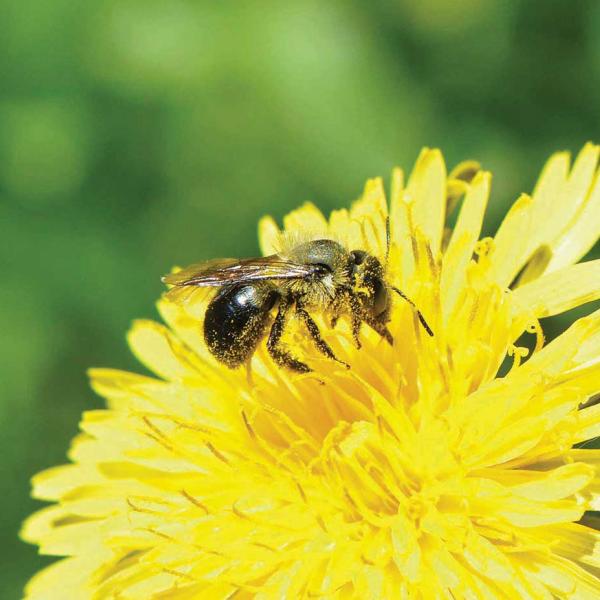 (Beyond Pesticides, October 20, 2020) The additive stress of pesticide exposure and food scarcity leads to significant declines in wild pollinator populations, according to
(Beyond Pesticides, October 20, 2020) The additive stress of pesticide exposure and food scarcity leads to significant declines in wild pollinator populations, according to 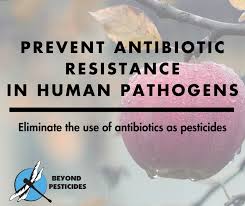 (
(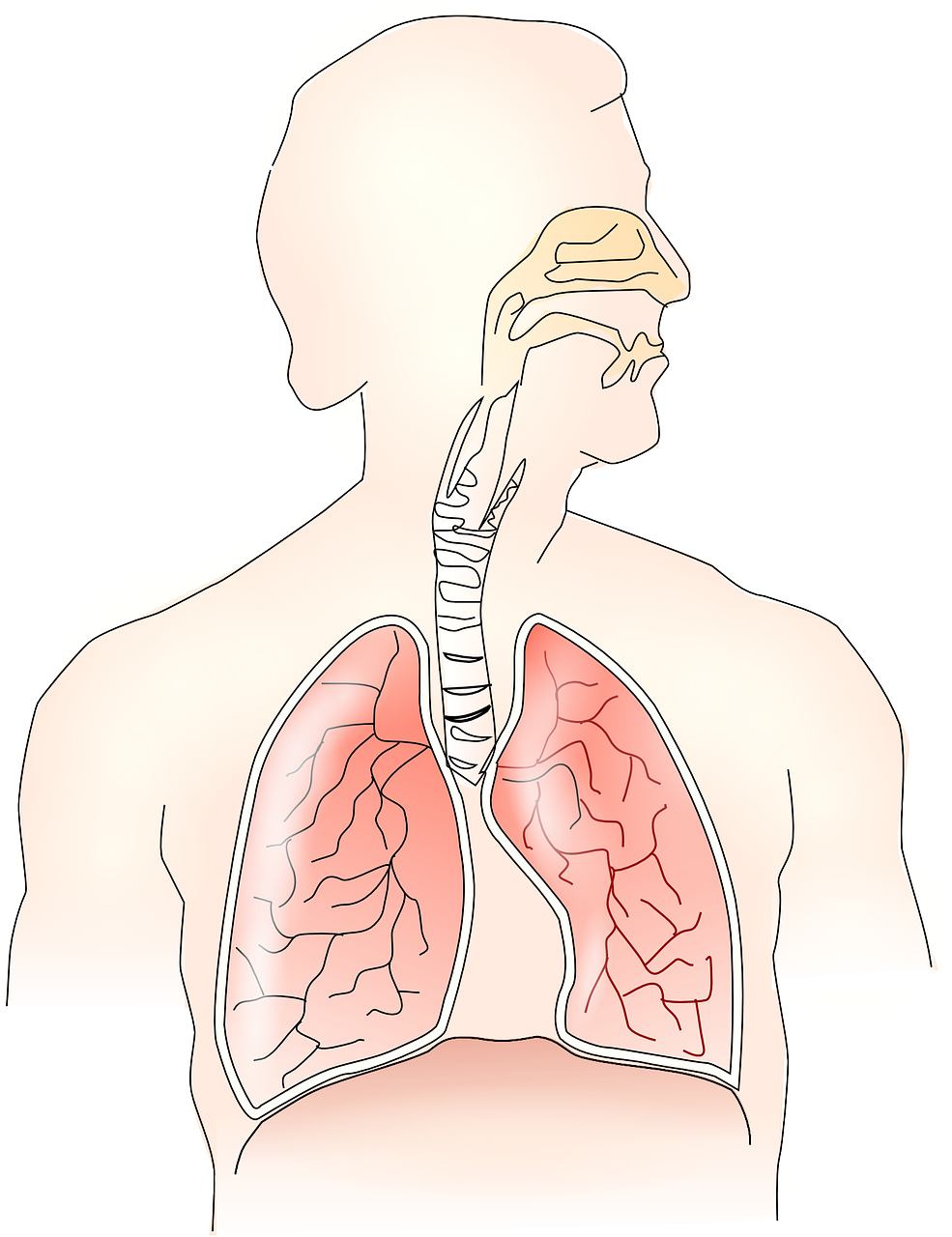
 (Beyond Pesticides, October 14, 2020) Exposure to certain endocrine disrupting pesticides increases the risk men, and Hispanic men in particular, will contract testicular cancer, according to research
(Beyond Pesticides, October 14, 2020) Exposure to certain endocrine disrupting pesticides increases the risk men, and Hispanic men in particular, will contract testicular cancer, according to research 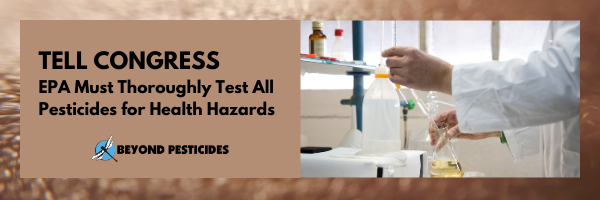 (Beyond Pesticides, October 13, 2020)Â Â As the prestigious journal Nature publishes an article titled
(Beyond Pesticides, October 13, 2020)Â Â As the prestigious journal Nature publishes an article titled 
 (Beyond Pesticides, October 9, 2020)
(Beyond Pesticides, October 9, 2020) 
 (Beyond Pesticides, October 7, 2020) This week the Baltimore, Maryland City Council passed an ordinance restricting the use of toxic pesticides on public and private propertyâincluding lawns, playing fields, playgrounds, childrenâs facility (except school system property [golf courses are exempt]âfollowing an approach similar to legislation first spearheaded by
(Beyond Pesticides, October 7, 2020) This week the Baltimore, Maryland City Council passed an ordinance restricting the use of toxic pesticides on public and private propertyâincluding lawns, playing fields, playgrounds, childrenâs facility (except school system property [golf courses are exempt]âfollowing an approach similar to legislation first spearheaded by  (Beyond Pesticides, October 6, 2020) Despite the rapid rise of antibiotic resistance in the United States and throughout the world, new documents find the Trump Administration worked on behalf of a chemical industry trade group to weaken international guidelines aimed at slowing the crisis. Emails obtained by the Center for Biological Diversity through the Freedom of Information Act show that officials at the U.S. Department of Agriculture (USDA) worked to downplay the role of industrial agriculture and pesticide use in drug-resistant infections.
(Beyond Pesticides, October 6, 2020) Despite the rapid rise of antibiotic resistance in the United States and throughout the world, new documents find the Trump Administration worked on behalf of a chemical industry trade group to weaken international guidelines aimed at slowing the crisis. Emails obtained by the Center for Biological Diversity through the Freedom of Information Act show that officials at the U.S. Department of Agriculture (USDA) worked to downplay the role of industrial agriculture and pesticide use in drug-resistant infections. (Beyond Pesticides, October 5, 2020)Â Â Another example of trading health and environmental protection for the support of special interests, EPA announces the misleading and fraudulently named, âEPA Supports Technology to Benefit America’s Farmers.â This time, EPA announces plans to âstreamline the regulation of certain plant-incorporated protectants (PIPs).â Named to sow confusion, PIPs are plants engineered with pesticides in them. PIPs are known in general for two problems arising from incorporating pesticidal ingredients into crops: residues that cannot be washed off and production of crop-eating insects that are resistant to the incorporated pesticide that blankets the agricultural landscape.Â
(Beyond Pesticides, October 5, 2020)  Another example of trading health and environmental protection for the support of special interests, EPA announces the misleading and fraudulently named, âEPA Supports Technology to Benefit America’s Farmers.â This time, EPA announces plans to âstreamline the regulation of certain plant-incorporated protectants (PIPs).â Named to sow confusion, PIPs are plants engineered with pesticides in them. PIPs are known in general for two problems arising from incorporating pesticidal ingredients into crops: residues that cannot be washed off and production of crop-eating insects that are resistant to the incorporated pesticide that blankets the agricultural landscape.  (Beyond Pesticides, October 2, 2020)Â
(Beyond Pesticides, October 2, 2020)Â  (Beyond Pesticides, September 30, 2020) Low doses of neonicotinoid (neonic) insecticides are known to disrupt insect learning and behavior, but new science is providing a better understanding of how these effects manifest at a cellular level. Published in the Proceedings of the National Academy of Sciences, this study finds that the neonic imidacloprid binds to brain receptors, triggering oxidative stress, reducing energy levels, and causing neurodegeneration.
(Beyond Pesticides, September 30, 2020) Low doses of neonicotinoid (neonic) insecticides are known to disrupt insect learning and behavior, but new science is providing a better understanding of how these effects manifest at a cellular level. Published in the Proceedings of the National Academy of Sciences, this study finds that the neonic imidacloprid binds to brain receptors, triggering oxidative stress, reducing energy levels, and causing neurodegeneration.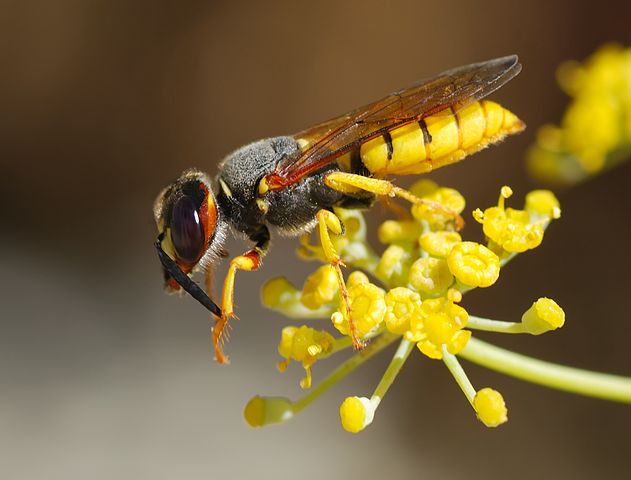 (Beyond Pesticides, September 29, 2020) While the
(Beyond Pesticides, September 29, 2020) While the  (Beyond Pesticides, September 28, 2020) These comments are due by October 5 at 11:59 pm EDT.
(Beyond Pesticides, September 28, 2020) These comments are due by October 5 at 11:59 pm EDT.  (Beyond Pesticides, September 25, 2020)Â
(Beyond Pesticides, September 25, 2020)Â 
 (Beyond Pesticides, September 23, 2020) Multinational agrichemical corporation Bayer coordinated with the U.S. government to pressure Thailand to
(Beyond Pesticides, September 23, 2020) Multinational agrichemical corporation Bayer coordinated with the U.S. government to pressure Thailand to 
